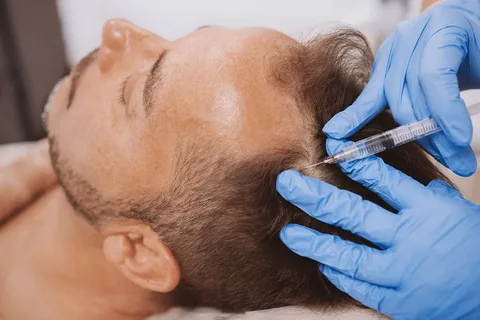Working Time
-
Mon - Sat :
10:00am - 01:00pm
05:00pm - 08:00pm
Contact Info
-
Phone: 7624008000
- recombhtc@gmail.com
Repair Hair Transplant

Hair Transplant Correction
One of the most disheartening experiences is discovering that your initial hair transplant surgery has failed. Such failures can result from technical errors by the surgical team or substandard surgical methods. Despite the abundance of hair transplantation clinics, procedures performed by inexperienced surgeons can lead to unsatisfactory results, diminished self-esteem, patient dissatisfaction, and depression.
Corrective hair transplants are particularly challenging due to the reduced donor area, poorly designed hairlines, and existing scarring. This process can be highly distressing for the patient and requires significant skill and expertise to correct previous mistakes. Proper management of the donor reserve, new design, and minimization of scarring are crucial.
Rescue Options for Failed Hair Transplants
There are several methods to repair a failed hair transplant:
- Body Hair: Using body hair can help patients with a depleted donor area.
- Concealing FUT Scars: Scars on the back of the scalp from FUT can be hidden with scalp revision or scalp micro-pigmentation.
- Correcting Lowered Hairlines: Adjusting the hairline to the correct position and addressing any tenting, pitting, or follicular prominence.
- Softening the Hairline: Creating a softer, more natural hairline.
Causes of Failed Hair Transplants
Several factors can lead to unsuccessful hair transplants:
- Drying Grafts: Hair grafts can dry out if exposed to air for more than 30-40 seconds. Smaller grafts are particularly vulnerable. This can occur if grafts are not immediately immersed in a physiologic solution after extraction, during graft transfer, or due to inefficient placement.
- Prolonged Storage of Grafts: Graft survival solutions must be properly maintained. Prolonged storage outside the body increases the risk of damage.
- Handling of Grafts: Moving grafts from the physiologic bath to the recipient area takes time. If grafts are left exposed to air, they can dry out.
- Placing Grafts: Delicate handling of grafts during placement is crucial.
- Depth of Grafts: Grafts placed too deeply or superficially can die, leading to follicle infection post-surgery.
Cases Requiring Hair Transplant Repair
- Unnatural Hairline:
- Design Issues: A straight-line hairline looks unnatural.
- High Placement: A high hairline makes the forehead look too large and can lead to continued balding.
- Low Placement: Hair transplants performed in one's early 30s may later appear too low and unnatural. Extracting follicular units and reconstructing the hairline can correct this.
- Abrupt Hairline: A strong, abrupt hairline with thick, coarse hair grafts on the frontal aspect can look unnatural. If temples are done, they may appear horn-like with halo baldness.
- Sparse Growth: Lack of density can be corrected by implanting grafts in between existing hair.
- Incorrect Position: Incorrect hairline positioning can be adjusted.
- Compromised Density: Even if thicker hair is present, visible scalp indicates low density. Implanting grafts in between can correct this.
- Thick Temples: Excessive volume from thick hair implantation can make temples look bushy. This can be adjusted for a more natural appearance.
Why Choose RECOMB for Corrective Hair Transplantation?
Dr. Nilesh believes that those seeking corrective surgery are individuals in need of special care. It is surprising that about 20-30 patients approach us for corrections. Often, doubles or triples are carelessly implanted in the hairline zone, resulting in an unnatural appearance. By carefully extracting those grafts, we ensure minimal damage, understanding the importance of each graft. We hope you never require corrective surgery, but if you do, we will ensure you no longer feel the impact of a failed hair transplant.


